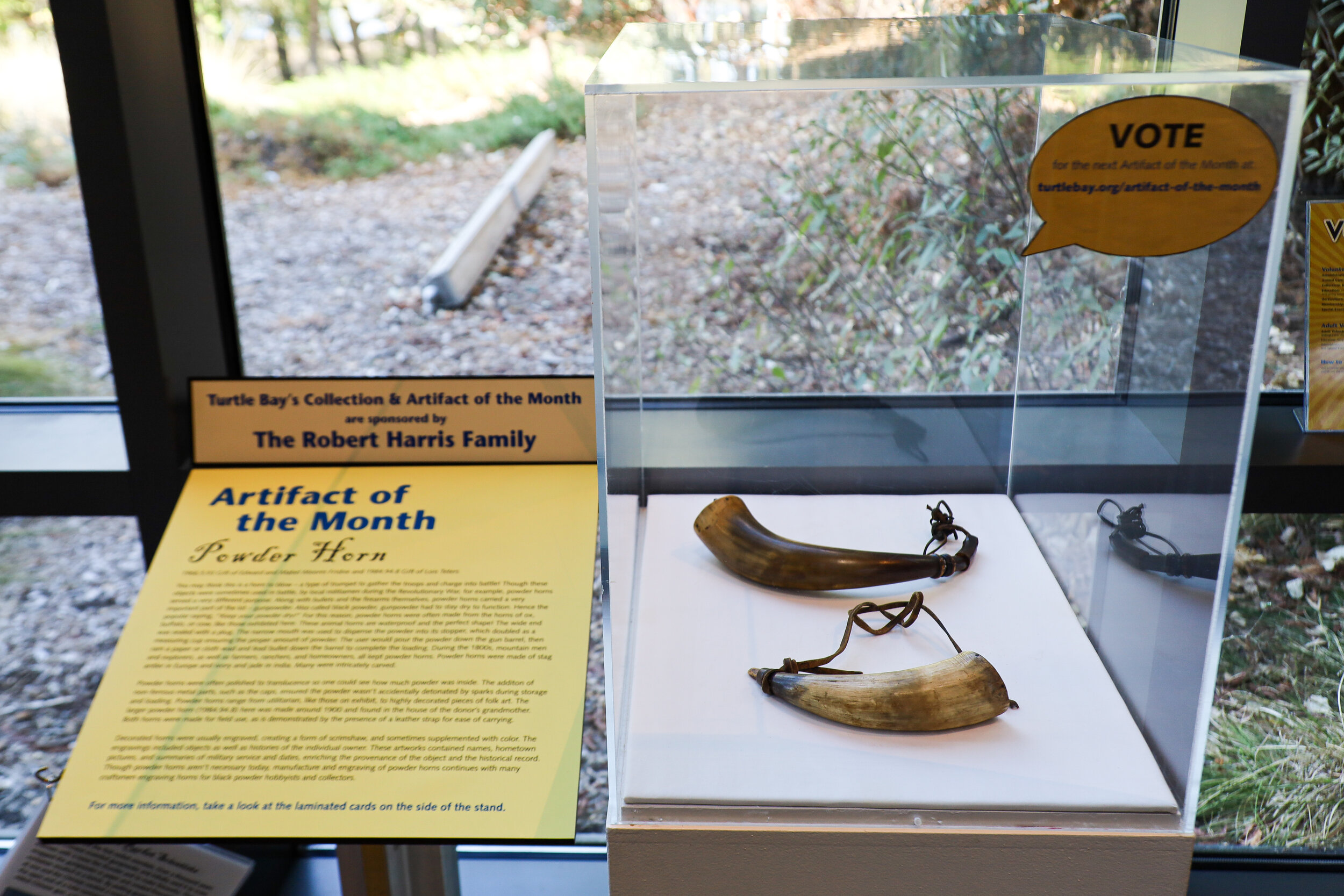Powder Horn
1966.5.93 Gift of Edward and Mabel Moores Frisbie and 1984 of Lois Teters
You may think this is a horn to blow – a type of trumpet to gather the troops and charge into battle! Though these objects were sometimes used in battle, by local militiamen during the Revolutionary War, for example, powder horns served a different purpose. In addition to bullets and the firearms themselves, powder horns carried another important part of the kit – gunpowder!
Also called black powder, gunpowder must stay dry to function. Hence the popular saying, “Keep your powder dry!” For this reason, powder horns were often made from animal horns. Stag antler was popular in Europe and jade or ivory were used in India. In America, ox or buffalo horn, or cow horn, like the ones on exhibit at Turtle Bay, are common. These horns are waterproof and already the perfect shape! The wide end was sealed with a plug. The narrow mouth was used to dispense the powder into its stopper, which doubled as a measuring cup ensuring the proper amount. The user would pour the powder down the gun barrel, then ram a paper or cloth wad and lead bullet down the barrel to complete the loading.
Powder horns were often polished to translucence in order to see how much powder was left inside. The addition of non-ferrous metal parts, such as caps, ensured that the powder wasn’t accidentally detonated by sparks during storage and loading. Powder horns range from utilitarian, like those on exhibit, to highly decorated pieces of folk art.
Decorated horns were usually engraved, creating a form of scrimshaw, and sometimes supplemented with color. The engravings depicted references to the original owner including names, hometown pictures, summaries of military service, and dates. This information enriches the provenance of the object and the historical record. Manufacture and engraving of powder horns continue today with many craftsmen engraving horns for black powder hobbyists and collectors.
To learn more about this artifact, visit the Artifact of the Month exhibit inside the Museum entrance at Turtle Bay Exploration Park. You can also click the link below for the Artifact of the Month webpage for more information on the exhibit and past blogs.
Cast your vote for the next Artifact of the Month below…













